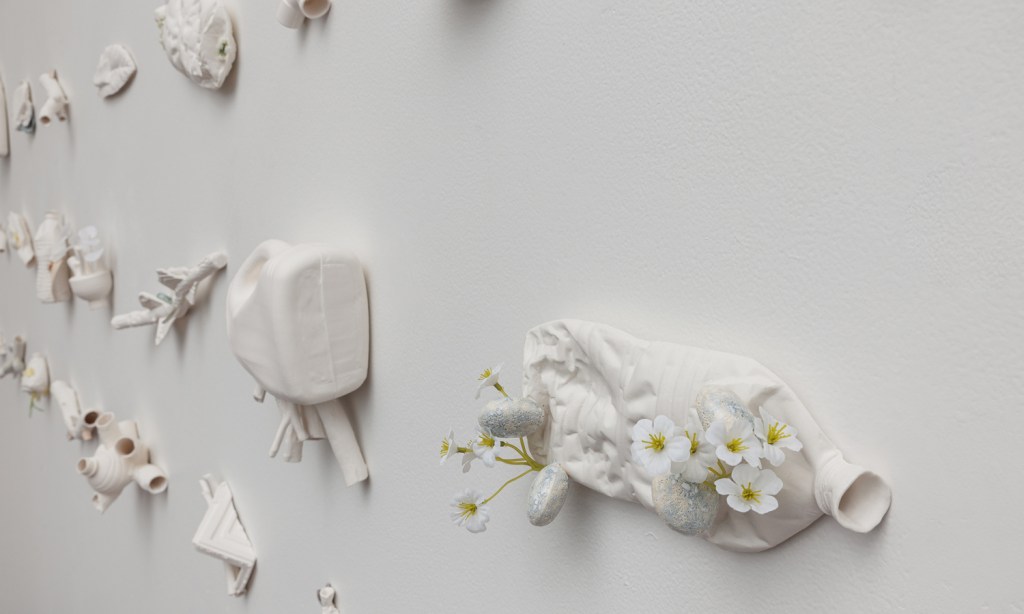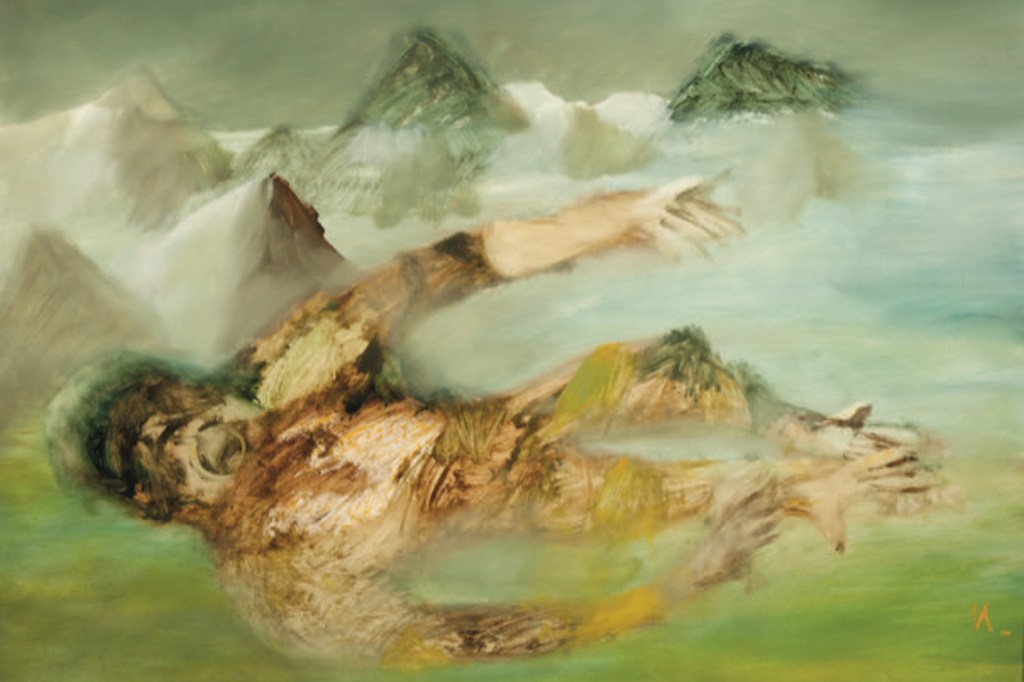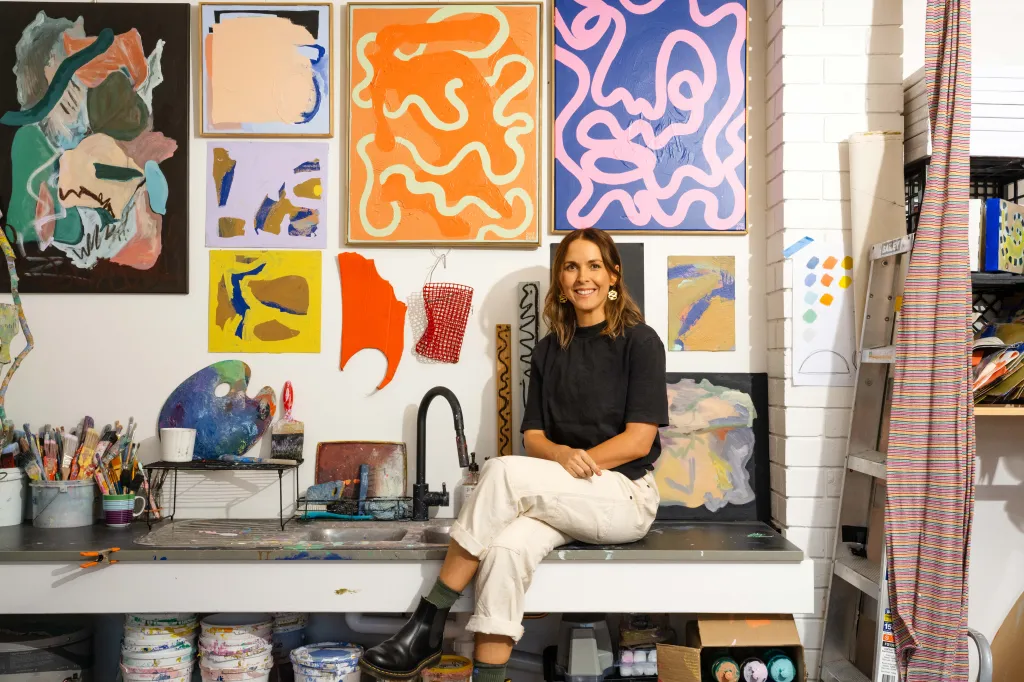Ghostly hybrid forms give viewers much to reflect on
Emerging artist Lauren Downton’s ceramic forms feature casts of objects ranging from branches and antlers to plastic bottles, inviting visitors to Port Adelaide’s POP Gallery to reconsider the relationship between humans and the natural world.

Lauren Downton: Amalgam
Post Office Projects, Port Adelaide
Lauren Downton’s exhibition is an exploration of our interconnectedness with nature. Amalgam features a series of sculptures that incorporate casts of branches, leaves, antlers, and both natural and human-made waste like plastic bottles, through which the South Australian artist invites viewers to reconsider what it means to be human in a rapidly changing world.
The exhibition probes the complexities of consumption and challenges perceptions of boundaries between the natural and artificial. This evocative body of work is an invitation to engage with the entangled relationships that shape our existence and environment.

Lauren Downton, Amalgam (series), 2024. Photo: James Field
Downton – who won two key awards at this year’s Helpmann Graduate Exhibition – has an innovative approach to contemporary ceramics. She uses casting and grafting in her practice to combine elements of found materials into mutated sculptures that defy traditional categorisation. Amalgam continues this exploration, with plant, animal and human-made objects all given equal weight in her hybrid forms.
The exhibition notes (by Josephine Mead) suggest that Downton’s work resonates with the ideas of cultural theorists like Rosi Braidotti and Jane Bennett, who explore post-human connection and the fluidity of existence. Themes of decay and regeneration inherent in Downton’s practice echo the sentiments of Braidotti and Bennett and their interest in our endless state of becoming. Organic and non-organic elements are displayed as one and the same through the literal fusing of their forms into singular artefacts, disrupting traditional hierarchies of prioritisation.
An excellent example of this effortless fusing is a piece (pictured above right) which merges together the forms of a milk carton, animal antlers and small flowers. The medium of clay works to physically demonstrate the intertwined nature of these human-made, animal and plant-based artefacts.
In her exploration of what it means to be human, Downton sparks a crucial reminder of our evolving relationship with the environment, urging viewers to contemplate the future of humanity in our natural world. She expresses a desire to engage audiences in considering alternate futures, using hybridity as a tool to deepen their conscious connection with the world around them.
The juxtaposition of natural and human-made materials into this body of clean, crisp works is both striking and intriguing. The incorporation of plastics alongside leaves and branches prompts urgent reflections on our consumption patterns and their impact on other life forms.
Subscribe for updates

Lauren Downton, Amalgam (series), 2024, porcelain and found rubbish. Photo: James Field
Amalgam is a thought-provoking exhibition. Downton’s work serves as a timely reminder that – as we navigate the spaces between life and death, the natural and un-natural, growth and decay – we are all part of an ongoing, interconnected cycle of being. The exhibition not only showcases her technical exploration of grafting methods, but engages us in a vital conversation about empathy, over-consumption and our shared existence on this planet.
Amalgam by Lauren Downton is showing in the vestibule gallery at Post Office Projects Gallery + Studios (POP) until November 2. In the main gallery, POP is presenting Henry Wolff’s series Together.
Brooke Ferguson, an emerging visual artist and arts worker, is the 6th recipient of the Helpmann Academy InReview Mentorship. She is working with experienced visual arts writer Jane Llewellyn to write a series of articles for publication in InReview.

